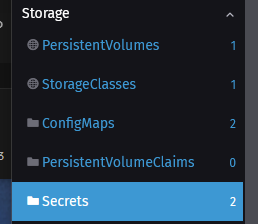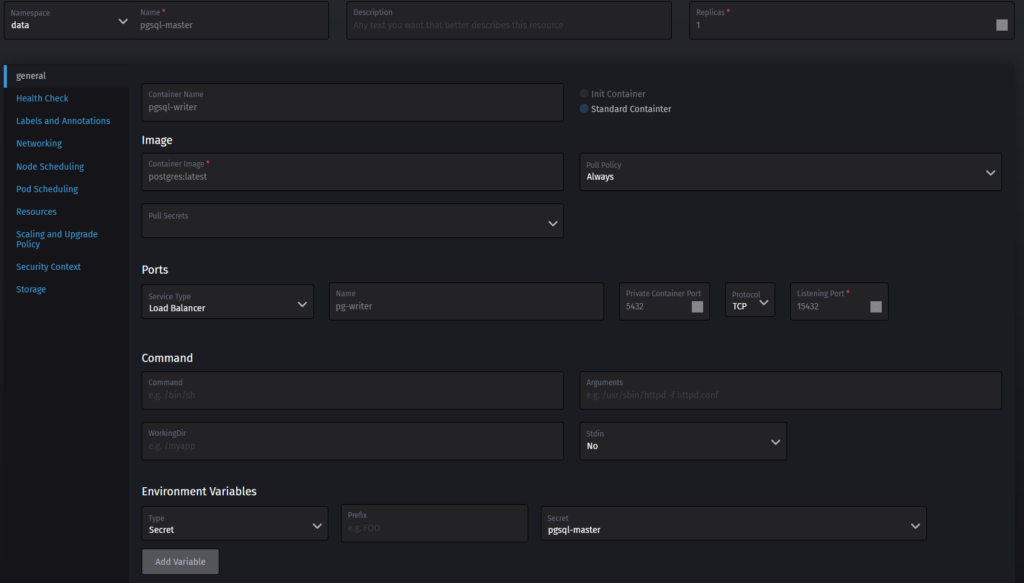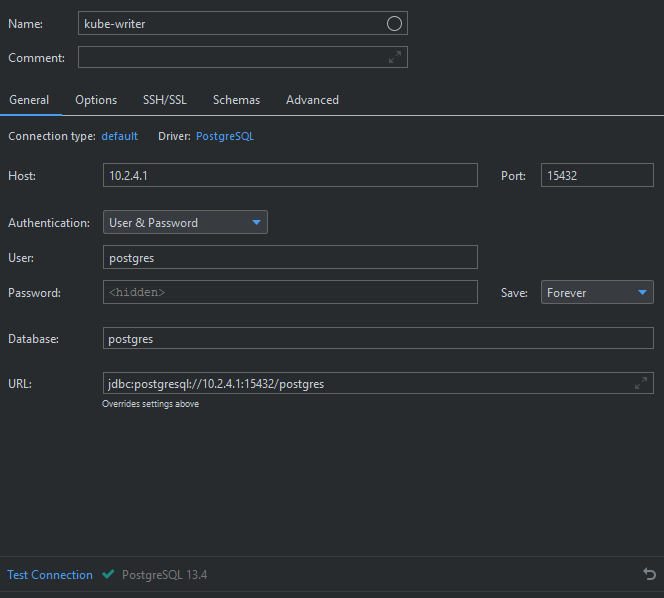For a few month I’ve been using the Postgres server provided with my NAS, and it was fine, but since it reached its limit, let’s deploy a new database using Kubernetes on a Rancher cluster.
I won’t review how to create your K3S cluster and a Rancher server. For this part this was pretty well covered by NetworkChuck in this video:
The Goal
I’m starting to have quite a few project that uses databases one way or another. To keep everything tidy, I’ll need a reliable way to:
- Manage all the databases
- Ensure each project access the database with minimal privileges
- Backup data both locally and remotely
Ideally, you’ll want each project to have its own database instance, and have different instances for testing/beta/prod to ensure stability, but I don’t have enough compute space for this, and my overall throughput is low, so I’ll keep everything in the same instance.
Prerequisites
Before doing any work, what is already prepared:
- A working rancher instance
- A working cluster in the instance
- A NFS storage accessible by the instance
Preinstall
Prepare database secrets:
There is one thing you want: being able to set a secured password.
There is one thing you don’t want: storing this password in your source code
To avoid having to store the password in your deployment, let’s use a secrets manager, lucky for us rancher allow us to do exactly this:
- Go in Cluster Explorer

- And choose Secrets in the Storage Category

- Create a new Secret
- Select Opaque (Basically a key/value list)
- Secret Name: postgres.config
- POSTGRES_PASSWORD = your admin password
- POSTGRES_USER = Your admin username (default is postgres)
Why using a secret and not write this in a file:
- Having the secret stored that way will allow you to publish the whole deployment setup without revealing any secrets
- It will make easier to update the password, meaning we will be able to rotate the passwords
Prepare the deployment
Before deploying, we need to prepare a few files.
In my case I have a NFS drive that handles the the storage and replication to a remote backup server (if you want some tips on this, just ask in the comment). But you can create the file in a specific directory in the server, or use AWS EBS or really anything supported by rancher and there is a lot.
Note that all the files and the YAML for the deployment will be available in my github.
postgres-master.conf
This file will contain all the postgres engine setup, I have a small cluster, and it will run have to share limited resources, so no big changes, I’ll keep the default values for everything and only add this to the default configuration:
# Replicationwal_level = replica
hot_standby = on
max_wal_senders = 10
max_replication_slots = 10
hot_standby_feedback = on
pg_hba.conf
This is the file that will allow users to connect to the database.
Ensure you have this line:
host all all all md5
Deployment
Everything is ready now, let’s create a new deployment:
- Go in Workload-> Deployments
- Click Create

- Setup the general values:
- Name: pgsql-master (I’ll come back to this on a later post and you’ll understand why)
- Container Name: pgsql-master
- Image: postgres:latest (will pull the latest postgres container from docker)
- Ports (Add Port):
- Service Type: Load Balancer
- Name: postgres-master
- Private container port: 5432 (postgres default port)
- Protocol: TCP
- Public Host Port: 15432 (it’s the port you will use to connect to the database)
- Environment Variables (Add one):
- Type: Secret
- Secret: postgres.config (or whatever you entered for the secret name)
This will create all the environment variables present in your secret
- Setup the storage:
- For this part you will have to choose the storage type best fitting for you, in my case: NFS
- Mount Point:Sub path in volume
- /var/lib/postgres/data:pgsql-writer/data
- /etc/postgresql/postgresql.conf:pgsql-writer/postgresql-master.conf
- /etc/postgresql/pg_hba.conf:pgsql-writer/pg_hba.conf

- Create and voilà

What’s next?
You see that I created category for my projects, the next steps is now to use this database. So create a wiki deployment and make it accessible through internet.
Another part I want to explore: create read replicas for our master instance, that will automatically scale.
Create the services to handle the password rotation.




Hello! This is kind of off topic but I need some guidance from an established blog. Is it very hard to set up your own blog? I’m not very techincal but I can figure things out pretty fast. I’m thinking about creating my own but I’m not sure where to start. Do you have any tips or suggestions? With thanks
Hello,
That’s not that hard, I’m using WordPress to drive this website. You can easily find many service provide that offers managed WordPress servers so you don’t have to have any tech knowledge to setup and manage your website.
I would suggest checking at Hostlinger